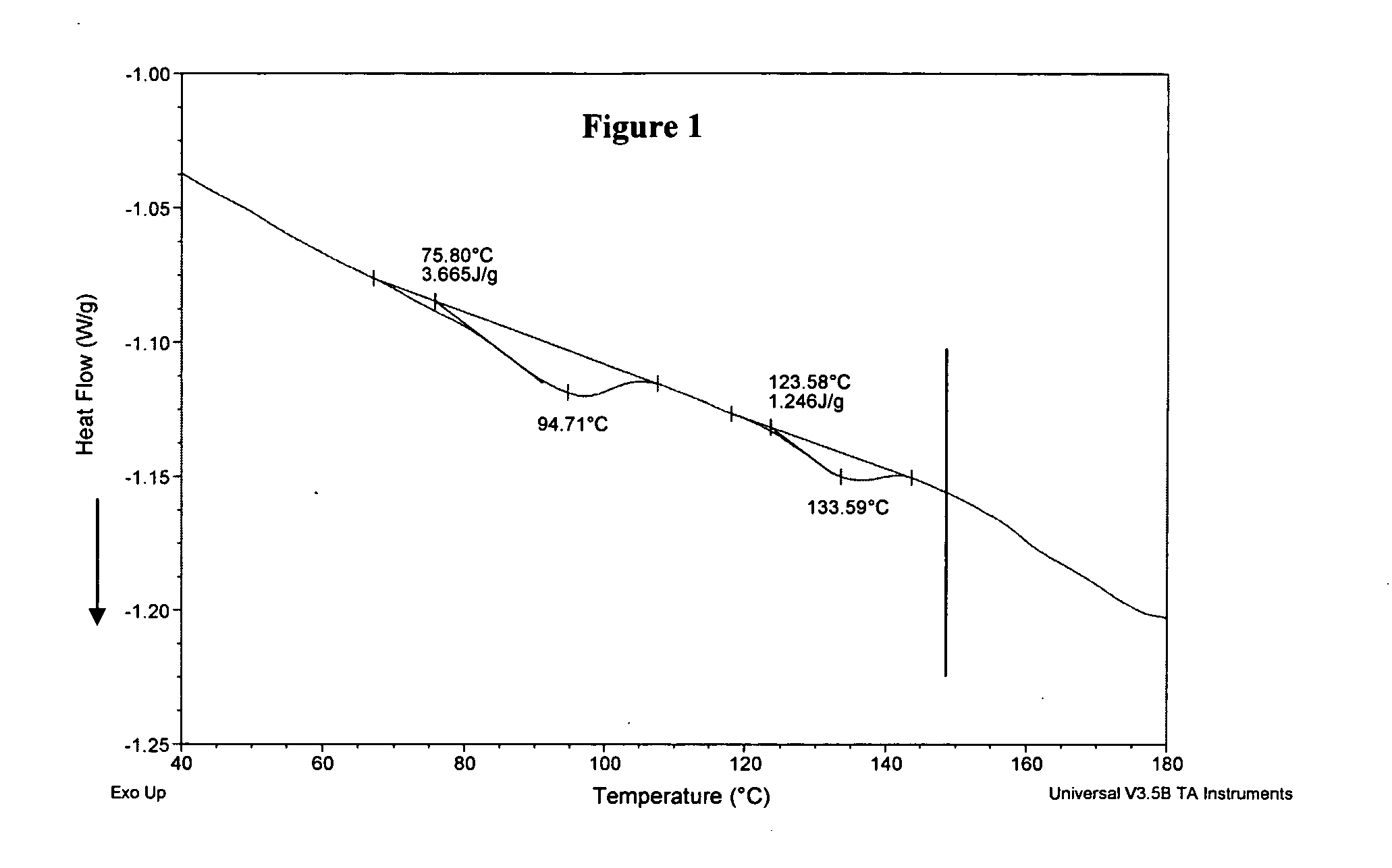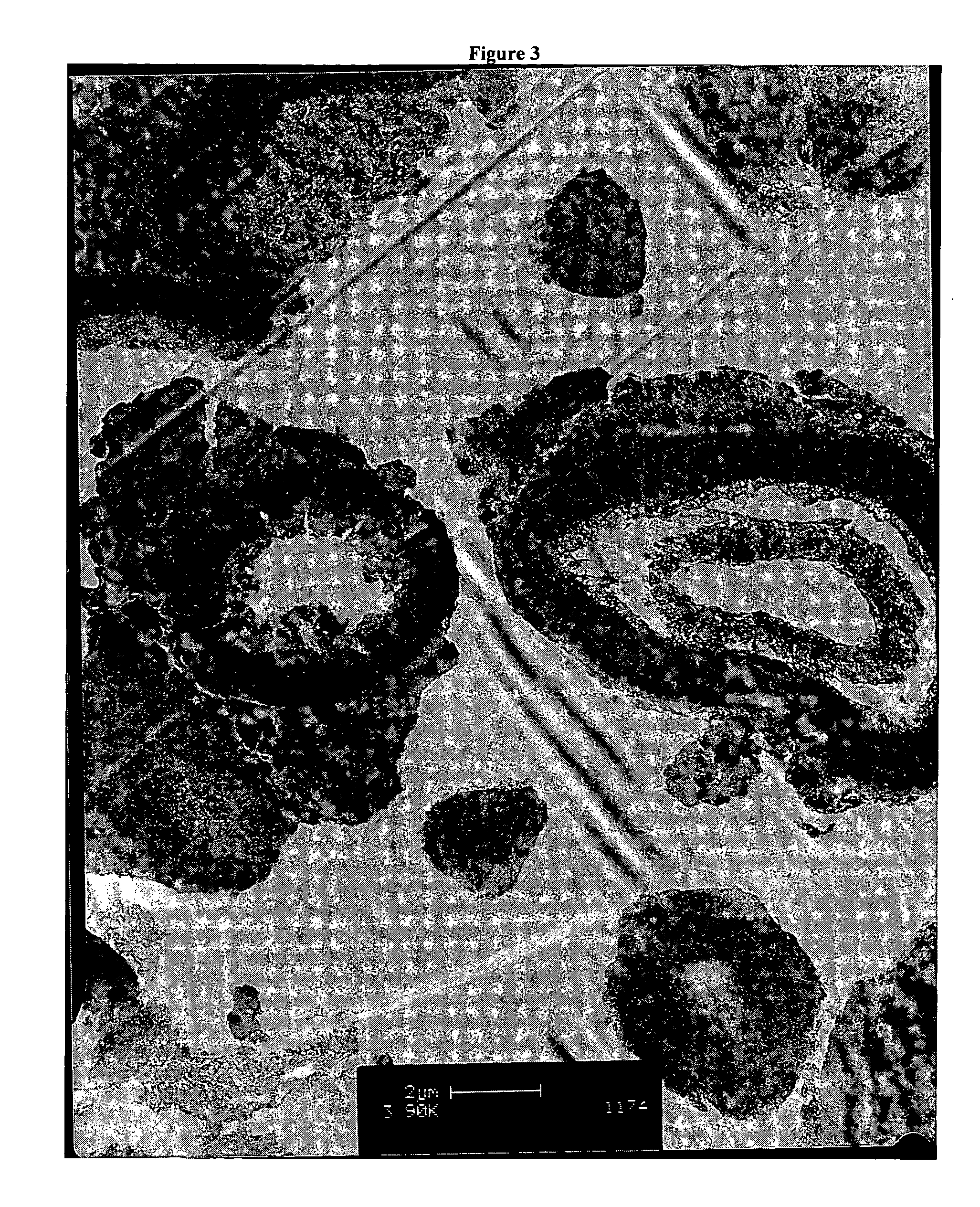Enzyme-resistant starch and method for its production
a technology which is applied in the field of enzyme-resistant starch and production method, can solve the problems of complex process, high cost, and failure to produce such starch in the past, and achieve the effects of destroying its native molecular structure, and reducing its molecular weigh
- Summary
- Abstract
- Description
- Claims
- Application Information
AI Technical Summary
Benefits of technology
Problems solved by technology
Method used
Image
Examples
example 1
[0057] A slurry containing high amylose starch (HS-7 Variety 4200, Honen Starch Co.), measured as 71% amylose, water and denatured ethanol was prepared in the proportions shown in Table 1. The denatured ethanol was prepared by mixing a commercial ethanol, which contained 5% water by volume, with methanol, in a ratio of five gallons of methanol per 100 gallons of ethanol. The alcohol concentration given in Table 1 refers to the concentration in the alcohol / water blend including the moisture present in the starch (i.e., excluding the dry solids in the starch). For each experiment, a 1400 g batch of the slurry was prepared and placed in a 2 quart high pressure stirred autoclave fitted with internal heating coils connected to a high pressure steam source. The autoclave was sealed, purged with nitrogen and heated to the desired temperature. The desired temperatures were maintained for the times indicated in Table 1 (first at “Temp 1” for “Time 1,” then at “Temp 2” for “Time 2,” and then ...
example 2
[0061] Optimization of Heat-Moisture treatment was investigated using non-heat moisture treated resistant starch made in the pilot plant, Table 3. The material was made using generally the same method as in Example 1, but with a 100 gallon pressure reactor and a 70 lb batch. Sample 2-6 was dewatered in a Western States basket centrifuge. Then the material was dried and desolventized using a Proctor-Schwartz tray dryer to about 5% moisture and milled. Approximately 30 gram samples of the dry material were blended with water in beakers to make a range of moisture levels. The moistened materials were sealed in tubes and heated from 1 to 2 hours in an oven over a range of temperatures. The samples were cooled while in the tubes, and then samples were removed, dried and ground, and measured for TDF. The results were analyzed in a regression equation and the optimum region for heat-moisture was found. For sample 2-6, the best region was about 25% moisture and 121° C. The TDF increased fro...
example 3
[0062] Pilot plant trials were performed using generally the same method as in Example 1, but with a 100 gallon pressure reactor and 70 lb batches. The conditions for the reactor are shown in Table 4 below. Sample 4-1 (same as sample 2-6) was dewatered in a Western States basket centrifuge. Then the material was dried and desolventized using a Proctor-Schwartz tray dryer and heat treated in a Littleford DVT-130 mixer. Sample 4-2 was prepared using the same equipment as sample 4-1, except a flash dryer was used to dry it and a Rosin fluidizer was used to desolventize the starch.
[0063]FIG. 2 is a transmission electron micrograph (TEM) of the HS-7 native starch granules that were used as the starting material. FIG. 3 is a TEM of the product of sample 4-1. The granule morphology of sample 4-1 of FIG. 3 indicates that the native granule structure seen in FIG. 2 is highly disrupted, if not completely destroyed. The DSC thermograms of FIG. 4 show that sample 4-1 after alcoholic processing...
PUM
| Property | Measurement | Unit |
|---|---|---|
| temperature | aaaaa | aaaaa |
| temperature | aaaaa | aaaaa |
| temperature | aaaaa | aaaaa |
Abstract
Description
Claims
Application Information
 Login to View More
Login to View More - R&D
- Intellectual Property
- Life Sciences
- Materials
- Tech Scout
- Unparalleled Data Quality
- Higher Quality Content
- 60% Fewer Hallucinations
Browse by: Latest US Patents, China's latest patents, Technical Efficacy Thesaurus, Application Domain, Technology Topic, Popular Technical Reports.
© 2025 PatSnap. All rights reserved.Legal|Privacy policy|Modern Slavery Act Transparency Statement|Sitemap|About US| Contact US: help@patsnap.com



